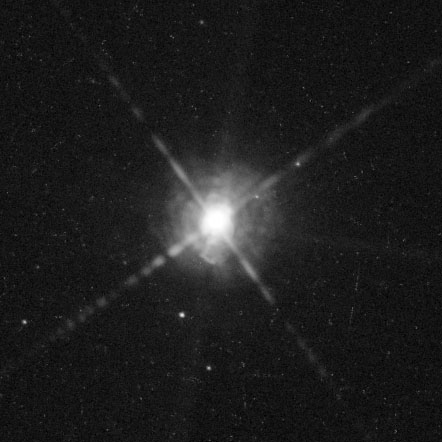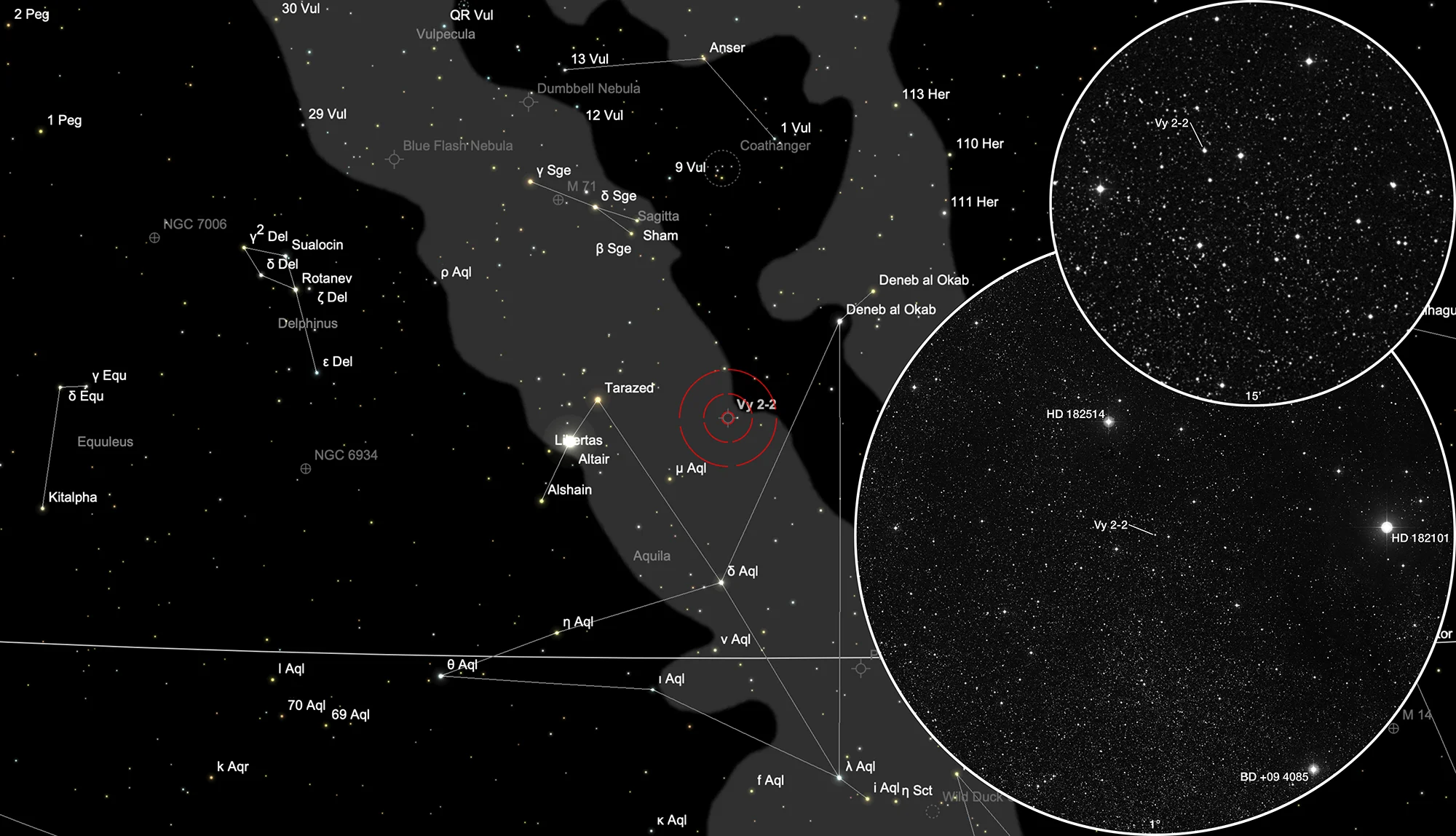Planetary Nebula Vyssotsky 2-2

History
This is one of three planetary nebulae discovered in November 1945 by the Russian-American astronomer Alexander N. Vyssotsky during a survey of camera plates taken at the Leander McCormick Observatory at the University of Virginia, USA. [615] As this PN is the second listed object in Vyssotsky's second publication, it is referred to as Vy 2-2.
Physical Properties
Vy 2-2 is a proto-planetary or very young planetary nebula. The kinematic age, derived from the angular expansion, is estimated to 213 ± 26 yr. The PN shows OH maser emission lines and has an angular diameter of only 0.4 arcsec. The central star may be of type Of. [616, 617] The distance is extimated to 4.394 kpc. Apparent magnitudes of the nebula through different filters: B 14.02, V 12.65, R 13.38, J 10.844, H 10.62, K 9.69. [145]
| Designations | PN G045.4-02.7: Vy 2- 2, PK 45-02.1, ARO 151, M 1-70, VV 230, VV' 497 |
| Right Ascension (J2000.0) | 19h 24m 22s |
| Declination (J2000.0) | +09° 53' 55" |
| Dimensions | 14." (optical), 0.5" (radio) |
| Radial Velocity | -71.4 ± 3.9 km/s |
| Expansion Velocity | 17.5 (O-III) 25.0 (N-II) km/s |
| C-Star Designations | AG82 367 |
| C-Star Magnitude | B: 15.51, V: 14.60 |
| Discoverer | VYSSOTSKY 1945 |
Finder Chart
The planetary nebula Vy 2-2 is located in the northern part of constellation Aquila. You'll find it on the longer, eastern edge of a conspicuous triangle of 6 to 8 mag stars, where the southernmost corner is formed by the double star BD +09°4085 (components HD 182219 and HD 182220, separated by 8.7"). On 12 July it is in opposition to the Sun and hence culminates at local midnight. The best time for observation is in the months from March to December.
